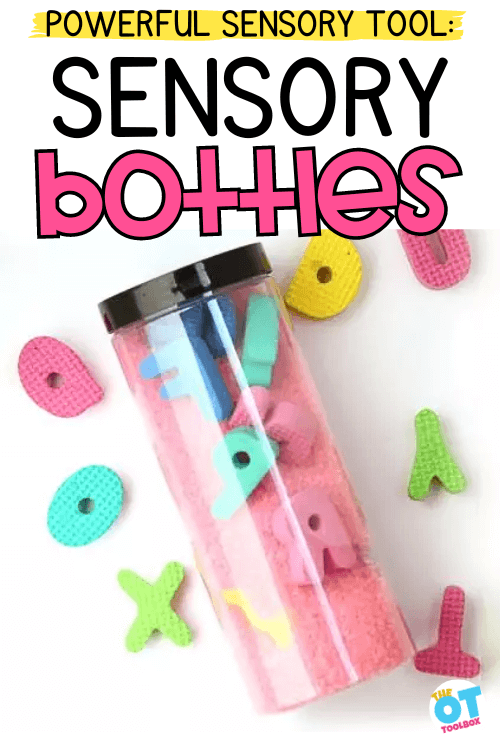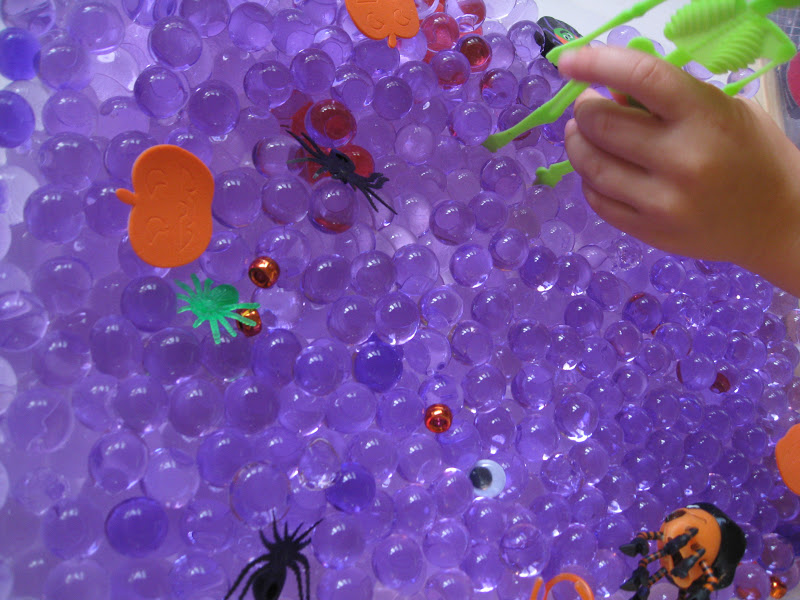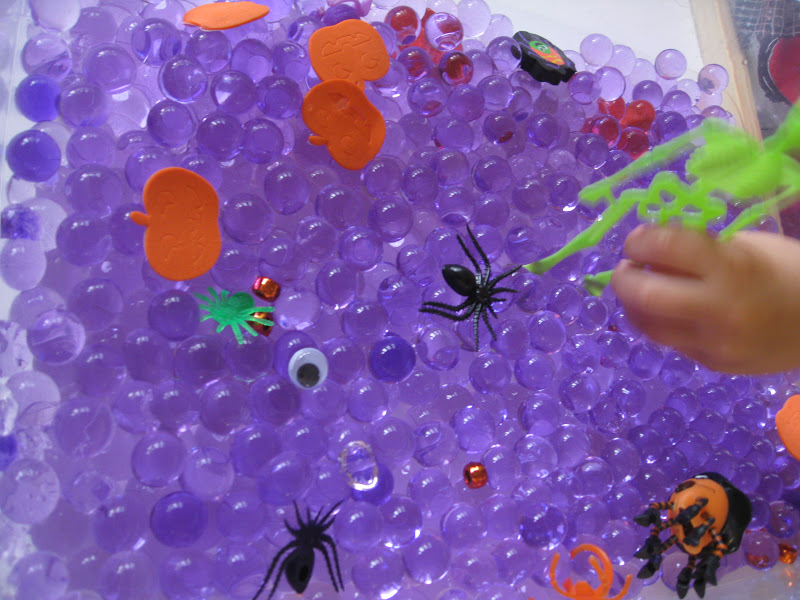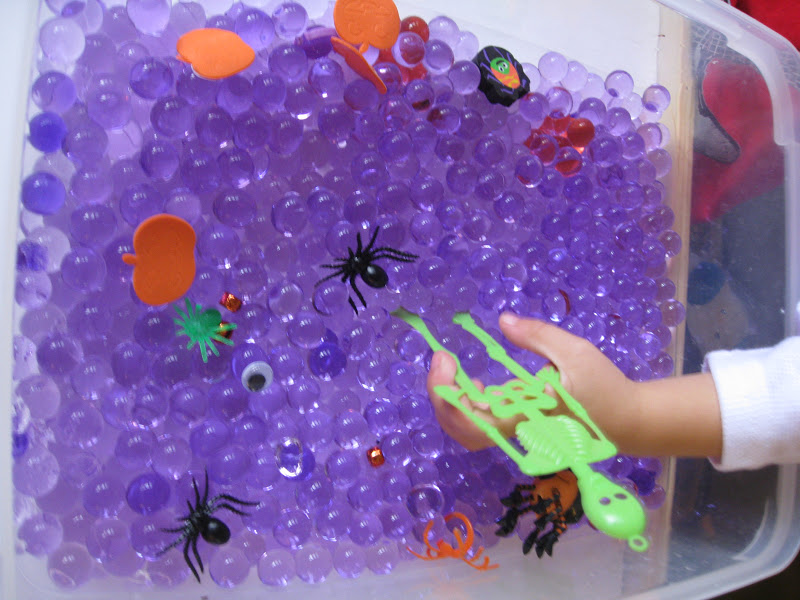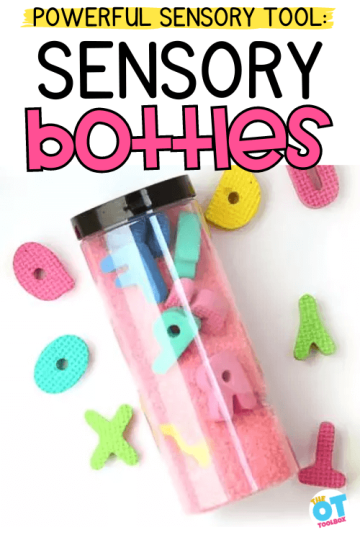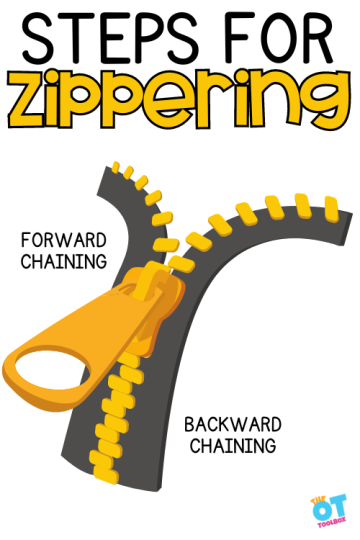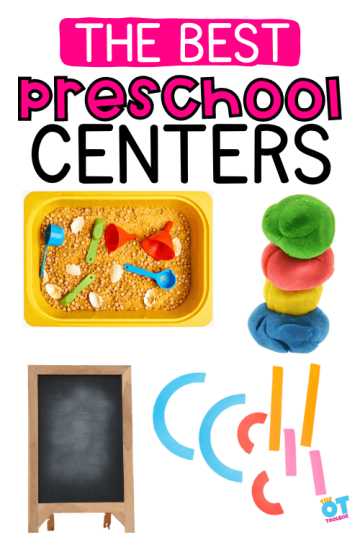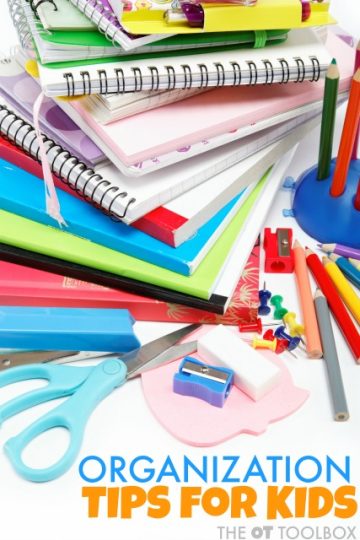Looking for a Halloween sensory bin that inspires mess, sensory tactile play? This spooky sensory bin has purple water beads, plastic spiders, Halloween toys, and is a fun fine motor and sensory activity for developing skills this time of year. Add this idea to your Halloween occupational therapy ideas. Sensory bins are such a fun way to learn and play!
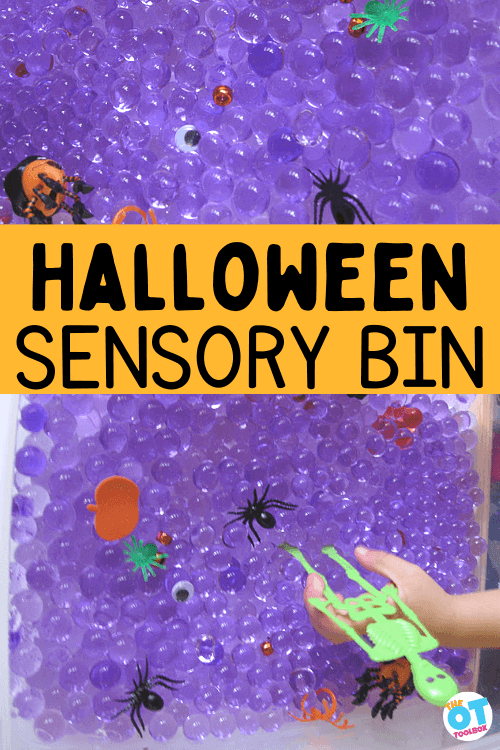
Halloween Sensory Bin
We made this Halloween sensory bin many years ago, and it was a huge hit. We used purple water beads, however if water beads aren’t appropriate for the clients on your therapy caseload, that’s ok.
Use the spooky (or not spooky) sensory bin activity to target specific skills:
- Fine motor skills– pincer grasp, separation of the sides of the hand, thumb opposition
- Tool use- tongs, tweezers, scoops
- Eye-hand coordination
- Tactile sensory exploration
- Benefits of playing with a sensory bin: self-confidence, problem solving, creativity, etc.
- Visual motor skills- great for pouring and scooping
- Learning opportunities
- Scissor skills by cutting paper in the sensory bin
There are many items that you can use as a sensory base in a Halloween sensory bin.
Halloween Sensory Bin Fillers
We have many sensory bin ideas here on The OT Toolbox, but to make this one pumpkin, ghosts, or spider themed, you can pull out any Halloween decoration or party supply. Some of the small items you can use to fill a Halloween sensory bin include:
- Black and Orange Colored Rice
- Plastic Spiders and Bugs
- Eyeball Bouncy Balls
- Plastic Bats
- Miniature Pumpkins
- Foam Ghost Shapes
- Halloween-themed Erasers
- Plastic Witch’s Cauldrons
- Plastic Vampire Teeth
- Glow-in-the-Dark Stars and Moons
- Miniature Tombstones
- Black and Orange Pom-Poms
- Plastic Skeleton Bones
- Plastic Candy Corn Shapes
- Orange and Black Feathers
- Miniature Witch Hats
- Plastic Skulls
- Plastic Snakes
- Black and Orange Beads
- Plastic Zombie Hands
- Miniature Jack-O-Lanterns
Many of these Halloween sensory bin ideas would be a great addition to a Halloween party.
How to use a Halloween sensory bin
Once you fill your bin with sensory play materials, there is more to it than just playing. The occupational therapy provider will probably think about all of the skills being targeted.
You can support learning and skills like executive functioning using a sensory bin, too.
- Incorporate Textures: Add materials with different textures to encourage tactile exploration. Consider including items like sand, kinetic sand, rice, dry beans, cotton balls, or foam pieces. Or, add wet and dry ingredients to mix things up. For kids with tactile defensiveness, this can be a real challenge.
- Math Skills: Incorporate items that promote Halloween math skills. Use small toys or objects that children can count, sort, or group. You can also add numbers or counting cards for math-related activities. In The OT Toolbox Members Club, we have counting cards with pumpkin numbers that are perfect for this.
- Expressing Sensory Words: Introduce themed books, flashcards, or word cards related to the sensory bin theme. Encourage children to describe what they see, hear, and feel in the bin, which enhances vocabulary and language development. This is important for self-regulation skills.
- Fine Motor Skills: Include tools like tweezers, tongs, or small scoops for activities that develop fine motor skills. Children can use these tools to pick up, transfer, or manipulate items within the sensory bin.
- Art and Creativity: Add materials that inspire creativity, such as colored paper, markers, or crayons. Children can use these supplies to draw, write, or create art based on the sensory bin’s theme.
- Science Exploration: Incorporate items related to the scientific aspects of the theme. For example, if it’s an ocean-themed bin, include shells, plastic marine animals, and magnifying glasses for observing and learning about sea life.
- Problem-Solving Activities: Include puzzles, mazes, or objects that require problem-solving skills. These can be used to create challenges or games within the sensory bin.
- Social Interaction: Encourage group play and social interaction by providing enough materials for multiple children. Promote sharing, cooperation, and communication during sensory play.
- Incorporate Music and Sounds: Play background music or use sound-making objects to stimulate the auditory sense. This can enhance the sensory experience and create a multisensory environment.
- Sensory Storytelling: Use the sensory bin as a storytelling tool. Create or find a story related to the theme and use items in the bin to act out the narrative. This combines sensory play with imaginative storytelling.
- Science Experiments: Incorporate simple science experiments or observations. For example, you can add items that float and sink, encouraging children to make predictions and observations.
- Color Recognition: Choose items in different colors to promote color recognition. Have children sort or group items by color.
- Seasonal Themes: Align your sensory bin with seasonal or holiday themes. This keeps the sensory experience fresh and engaging throughout the year.
- Emotion Exploration: Introduce items that represent emotions or facial expressions. Use this opportunity to discuss and explore feelings and emotions.
Halloween Sensory Bin
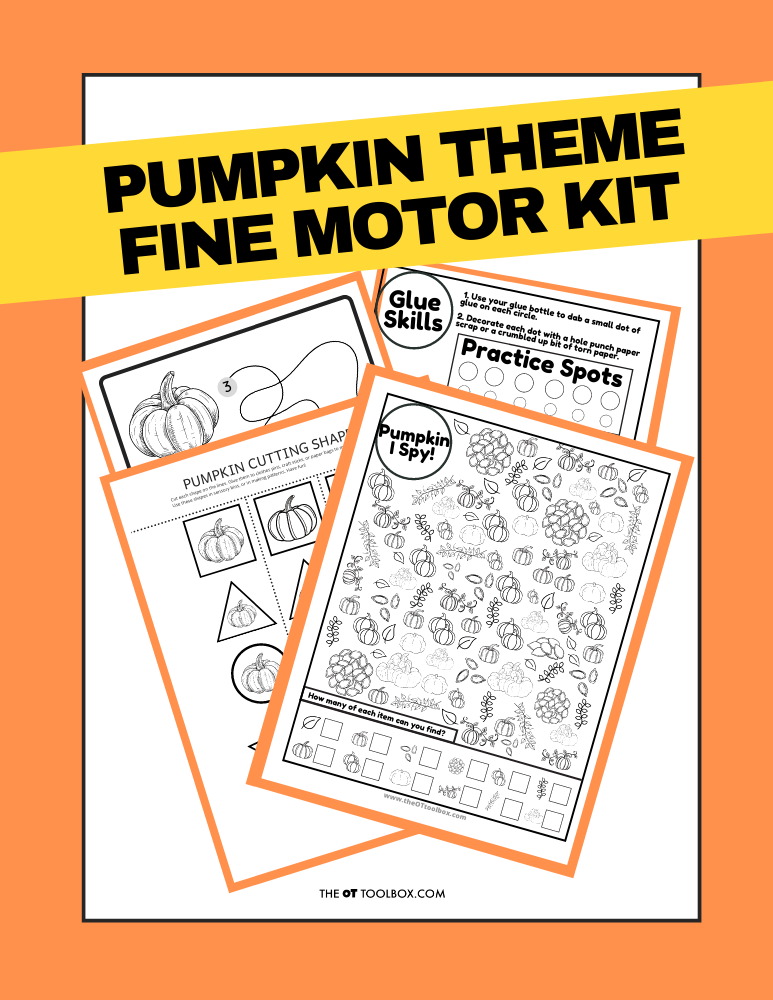
Grab the Pumpkin Fine Motor Kit for more coloring, cutting, and eye-hand coordination activities with a Pumpkin theme! It includes:
- 7 digital products that can be used any time of year- has a “pumpkins” theme
- 5 pumpkin scissor skills cutting strips
- Pumpkin scissor skills shapes- use in sensory bins, math, sorting, pattern activities
- 2 pumpkin visual perception mazes with writing activity
- Pumpkin “I Spy” sheet – color in the outline shapes to build pencil control and fine motor strength
- Pumpkin Lacing cards – print, color, and hole punch to build bilateral coordination skills
- 2 Pumpkin theme handwriting pages – single and double rule bold lined paper for handwriting practice
Work on underlying fine motor and visual motor integration skills so you can help students excel in handwriting, learning, and motor skill development.
You can grab this Pumpkin Fine Motor kit for just $6!

Colleen Beck, OTR/L has been an occupational therapist since 2000, working in school-based, hand therapy, outpatient peds, EI, and SNF. Colleen created The OT Toolbox to inspire therapists, teachers, and parents with easy and fun tools to help children thrive. Read her story about going from an OT making $3/hour (after paying for kids’ childcare) to a full-time OT resource creator for millions of readers. Want to collaborate? Send an email to contact@theottoolbox.com.

